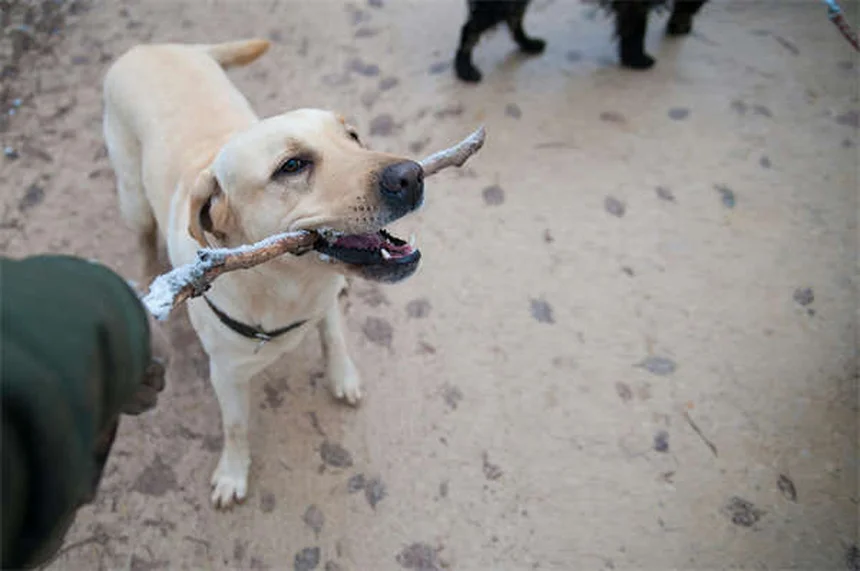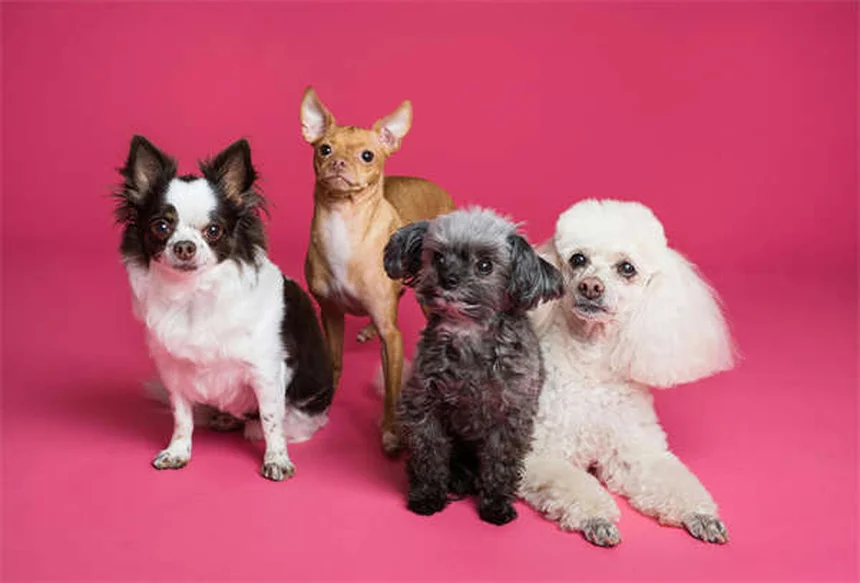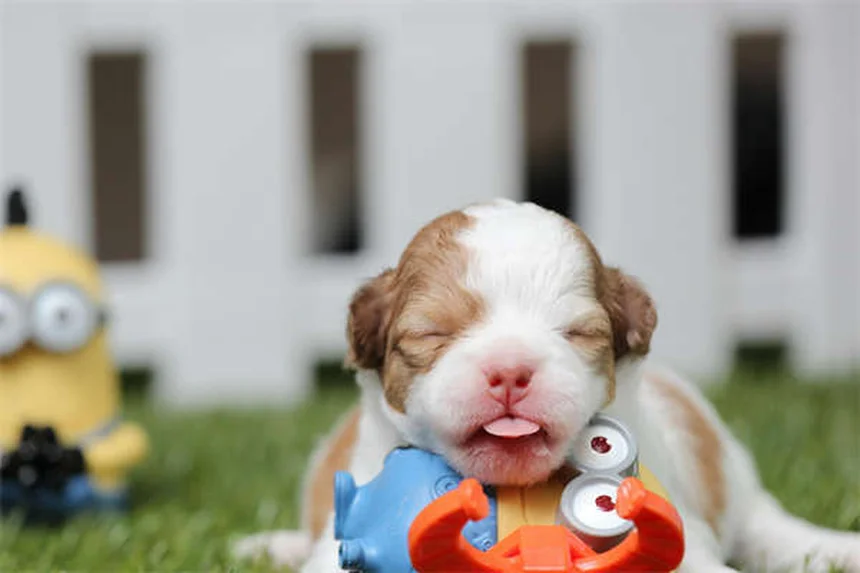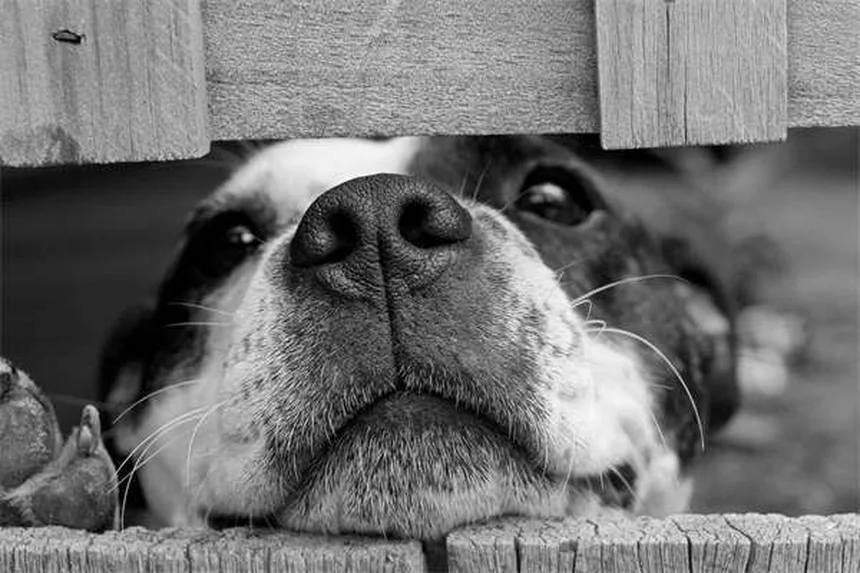Dog Aggression Explained: Signs, Causes & How to Stop It
Advertisement
What causes dog aggression? The answer is: Dog aggression stems from fear, pain, or confusion - not bad behavior. After working with hundreds of dogs, I can tell you that growling and snapping are just the tip of the iceberg. Most owners miss the early warning signs like yawning or lip licking that come first. The truth is, aggression is your dog's way of saying I'm uncomfortable - and if we don't listen, they escalate to louder words like biting. But here's the good news: understanding why your dog acts aggressively is the first step to fixing it. In this guide, I'll show you the subtle signs you've probably missed, explain what's really causing the behavior (hint: it's not their breed), and give you my proven techniques to help your dog feel safe again.
E.g. :Soft Tissue Sarcoma in Dogs: Symptoms, Treatment & Prognosis
Advertisement
- 1、Understanding Dog Aggression: It's More Than Just Growling
- 2、Breed Myths Debunked: Is Your Dog Really "Born Aggressive"?
- 3、The Many Faces of Dog Aggression
- 4、When Good Dogs Go "Bad": Sudden Aggression Explained
- 5、Calming the Storm: Practical Solutions
- 6、Prevention and Professional Help
- 7、The Science Behind Canine Communication
- 8、Environmental Factors We Often Overlook
- 9、The Role of Human Emotions
- 10、Nutrition's Surprising Impact on Behavior
- 11、Technology Meets Dog Training
- 12、FAQs
Understanding Dog Aggression: It's More Than Just Growling
What Does Dog Aggression Really Look Like?
You know that deep growl when your dog sees the mailman? That's just one piece of the puzzle. Dogs actually have a whole vocabulary of aggressive behaviors we often miss.
Here's something surprising: When Fido yawns or licks his lips, he might be telling you he's uncomfortable - not just sleepy! These subtle signs come long before the obvious growling or snapping. I've seen countless owners miss these early warnings, then wonder why their "perfectly calm" dog suddenly bit someone.
The Full Spectrum of Aggressive Behaviors
Let me break down the complete list from mild to severe:
| Early Warning Signs | Moderate Signals | Severe Reactions |
|---|---|---|
| Yawning | Baring teeth | Lunging |
| Lip licking | Air snapping | Biting with pressure |
| Freezing | Nose bumping |
See how much we've been missing? That "cute" nose bump is actually your dog's version of a warning punch!
Breed Myths Debunked: Is Your Dog Really "Born Aggressive"?
 Photos provided by pixabay
Photos provided by pixabay
The Truth About Breed Stereotypes
Ever heard someone say "Pit bulls are born mean"? Let me tell you why that's complete nonsense. I've worked with hundreds of dogs, and here's what I've learned:
Aggression isn't about breed - it's about individual experiences. That tiny Chihuahua snapping at your ankles? He could do way more damage if he was Great Dane-sized! Size and strength skew our perception, not actual aggression levels.
What Really Causes Aggression?
From my experience, these are the real culprits:
- Bad upbringing: Puppies from fearful moms often inherit those nerves
- Scary experiences: One bad vet visit can create lasting fear
- Resource guarding: Dogs who went hungry will protect their food
Here's a personal story: I once fostered a Lab who'd been kicked. For months, he'd growl at feet. Not because he was "aggressive," but because he was terrified.
The Many Faces of Dog Aggression
Common Types You Should Know
Did you know there are at least 8 distinct types? Let me explain the big ones:
Leash aggression is that embarrassing moment when your dog goes nuts seeing another dog across the street. Why? Because the leash prevents normal greeting behaviors.
Fear aggression looks scary, but it's really just panic. Imagine being cornered - you'd lash out too! I've seen the sweetest dogs snap when they feel trapped.
 Photos provided by pixabay
Photos provided by pixabay
The Truth About Breed Stereotypes
Some types sneak up on owners:
Redirected aggression happens when your dog can't reach what's upsetting them (like a squirrel) and takes it out on the nearest target (maybe your leg!). I call this "anger misdirection."
Resource guarding often starts small - maybe your dog eats faster when you're near. Left unchecked, it can escalate to full-blown food bowl attacks.
When Good Dogs Go "Bad": Sudden Aggression Explained
Is It Really Sudden?
Here's a question that changed how I view dog behavior: "Was it really sudden, or did we miss the signs?" In my career, 90% of "sudden" aggression cases had subtle warnings owners overlooked.
That said, true sudden changes need vet attention ASAP. Pain can make the gentlest dog snap. I'll never forget the time my normally sweet Golden growled when I touched his ear - turned out he had a nasty infection!
Environmental Triggers
Changes at home can push dogs over the edge:
New baby? Construction noise? House guests? These can all trigger aggression in sensitive dogs. I always tell clients: "Your dog isn't giving you a hard time, they're having a hard time."
Calming the Storm: Practical Solutions
 Photos provided by pixabay
Photos provided by pixabay
The Truth About Breed Stereotypes
Before we talk solutions, let's address the elephant in the room: punishment makes aggression worse. I've seen too many dogs go from growling to biting because owners yelled at the warning signs.
Here's why it backfires: If you punish growling, your dog skips straight to biting next time. It's like removing the "check engine" light instead of fixing the car!
Effective Calming Techniques
From my toolbox of tricks, these work best:
Pattern recognition: Does Fido only guard his bowl at dinner? Maybe it's the special topper you add. I had one client solve resource guarding just by changing the bowl location!
Target training can work wonders. Teaching "go to your place" gives anxious dogs an escape route before they feel cornered.
Prevention and Professional Help
Early Training Is Key
Here's a question I get all the time: "Can aggression be prevented?" The answer is yes - with proper puppy socialization. But even then, some dogs develop issues.
I compare it to raising kids: You can do everything right and still have challenges. That's why ongoing training matters so much.
When to Call the Pros
Sometimes you need backup:
A good trainer is worth their weight in gold. Look for ones who use positive reinforcement - the "yank-and-shank" crowd usually makes things worse. I've seen medication help too, especially for fear-based cases.
Remember: Aggression is communication, not a death sentence. With patience and the right approach, most dogs can improve dramatically. I've seen "hopeless" cases turn into therapy dogs!
The Science Behind Canine Communication
How Dogs Actually "Talk" to Us
You ever notice how your dog's tail tells a whole story? It's not just wagging - the speed, height and direction all mean different things. A high stiff wag often signals alertness or potential aggression, while a low relaxed wag shows friendliness.
Here's something fascinating I learned from a canine behaviorist: Dogs have over 30 distinct facial expressions, most involving their ears, eyes and mouth. That "guilty look" when they've chewed your shoes? Actually just stress signals from knowing you're upset!
The Hidden Language of Body Posture
Let me share an eye-opening experience:
I once worked with a German Shepherd who kept "smiling" at visitors. Turns out those pulled-back lips weren't happiness - it was a stress response called a submissive grin. Owners often misinterpret these subtle cues, which can lead to dangerous situations if the dog feels unheard.
Environmental Factors We Often Overlook
How Your Home Setup Affects Behavior
Did you know your furniture arrangement could be stressing your dog? High-traffic areas with no escape routes force dogs into uncomfortable interactions. I always recommend creating "safe zones" with beds or crates in quiet corners.
Here's a quick test: Walk through your home and notice where your dog naturally settles. Those are their chosen safe spaces - respect them! I helped one family reduce their dog's aggression just by moving his bed away from the noisy kitchen.
The Impact of Daily Routines
Dogs thrive on predictability. When we change their schedule suddenly, it can trigger anxiety that manifests as aggression. Some key routine elements that matter:
| Consistent Element | Why It Matters | Common Mistakes |
|---|---|---|
| Feeding times | Prevents food anxiety | Varying times by hours |
| Walk routes | Builds confidence | Always avoiding triggers |
| Sleep spots | Provides security | Moving beds frequently |
The Role of Human Emotions
How Your Mood Affects Your Dog
Ever notice your dog acting differently when you're stressed? Dogs mirror our emotional states more than we realize. I've seen cases where a owner's chronic anxiety directly contributed to their dog's reactive behavior.
Here's a personal story: During a particularly tough week, my normally calm Border Collie started barking at everything. When I worked on managing my own stress, his behavior improved dramatically. Makes you wonder - how often are we the trigger?
The Leash Connection Phenomenon
This blew my mind when I first learned it: The tension you feel in the leash travels both ways. When you tighten up anticipating your dog's reaction, you actually increase the likelihood of aggression.
Try this experiment next walk: When you see another dog approaching, consciously relax your grip and breathe deeply. You'll be amazed how often your dog stays calmer too!
Nutrition's Surprising Impact on Behavior
How Diet Affects Mood
You are what you eat - and so is your dog! Low-quality foods with artificial additives can contribute to hyperactivity and irritability. I always recommend looking for:
- High-quality protein sources as first ingredients
- Omega-3 fatty acids for brain health
- Limited simple carbohydrates
One client saw her dog's reactivity decrease by 60% after switching to a better food. Not saying it's a magic cure, but it's often an overlooked factor!
The Treat Training Balance
Here's a question I wrestled with for years: "Can we over-rely on food rewards?" The answer is yes - but the solution isn't removing treats entirely.
The key is gradually pairing food rewards with other reinforcements like praise and play. I developed a phased approach that weans dogs off constant treats while maintaining their training progress.
Technology Meets Dog Training
Helpful Gadgets Worth Trying
From my testing of various tech tools, these actually deliver results:
Interactive cameras let you monitor and even speak to your dog when you're away. Great for separation anxiety cases! I helped one couple reduce their dog's destructive chewing by 80% using scheduled treat dispensing.
Vibration collars (not shock collars!) can be effective for recall training when used correctly. The key is pairing the vibration with positive reinforcement - never as punishment.
Apps That Actually Help
The dog training app market is flooded with junk, but here are two I confidently recommend:
1. Dogo - Fantastic for step-by-step training programs with video demonstrations
2. Puppr - Great for tracking progress and setting reminders
Just remember - no app replaces real-world experience and professional guidance when dealing with aggression issues!
E.g. :7 Types of Dog Aggression and How to Nip Them in the Bud
FAQs
Q: Are certain dog breeds naturally more aggressive?
A: Absolutely not! As someone who's worked with dogs for over a decade, I can tell you breed stereotypes are complete myths. That "scary" Pit Bull might be a total lovebug, while that tiny Chihuahua could be the one giving me stitches! The truth is, aggression comes from individual experiences, not DNA. Bigger dogs just seem more aggressive because they can do more damage. I've seen Labs with severe fear aggression and Rottweilers who were therapy dogs - it's all about how they're raised and what they've been through. Factors like trauma, poor socialization, or even just one bad experience can make any dog reactive, regardless of breed.
Q: Why is my dog suddenly aggressive towards other dogs?
A: Sudden aggression usually means one of three things: pain, fear, or missed signals. First, rush to your vet - I can't tell you how many "suddenly aggressive" dogs turned out to have ear infections or arthritis. If health checks out, think about changes in your dog's world. Did a dog recently attack them at the park? Did you move to a busier neighborhood? Dogs don't just "turn mean" overnight. More often, they've been giving subtle stress signals (like avoiding eye contact or stiffening up) that we humans missed until they started growling. I once worked with a Golden Retriever who "suddenly" hated other dogs - turns out he'd been uncomfortable for months, but his sweet nature made him hide it until he couldn't take it anymore.
Q: How can I stop my dog's food aggression?
A: Here's my 3-step approach that's worked for countless clients: First, stop punishing the growling - that just teaches them to skip warnings and bite. Second, make meal times predictable (same place, same bowl, same routine). I had one client solve food aggression just by putting the bowl in a quiet corner! Third, practice the "trade-up" game: toss better treats near their bowl while they eat, so they learn your approach means good things. Important: Never reach for their food - that's like someone snatching your paycheck! Start from a distance and gradually work closer over weeks. For severe cases, I recommend a professional trainer who uses positive methods.
Q: Is it true that punishing aggression makes it worse?
A: 100% yes, and I've got the scars to prove it! Early in my career, I used to believe in "dominance" techniques - what a mistake. Punishing growling is like disconnecting your car's "check engine" light. The problem doesn't go away; you just don't get warnings anymore. I've seen dogs go from growling to full bites after owners yelled or shock collars were used. Here's what actually works: address the underlying emotion (usually fear) rather than suppressing the symptom. A fearful dog who gets punished becomes a more fearful dog - it's that simple. My breakthrough came when I switched to reward-based training and saw "aggressive" dogs transform once they felt safe.
Q: Can an aggressive dog ever be completely cured?
A: While there's no magic "cure," most aggressive dogs can improve dramatically with the right approach. I've seen "hopeless" cases become therapy dogs! The key is managing expectations. Some dogs will always need precautions (like muzzles at the vet), but can live happily with routines that avoid triggers. Others make complete turnarounds. It depends on the cause (pain-based aggression often resolves with treatment) and how early you catch it. The worst cases I've seen were dogs whose warning signs were punished for years before owners sought help. My advice? Don't wait - the sooner you address aggression, the better the outcome. And remember: progress isn't linear. Even my success stories had bad days, but consistent, compassionate training pays off.







